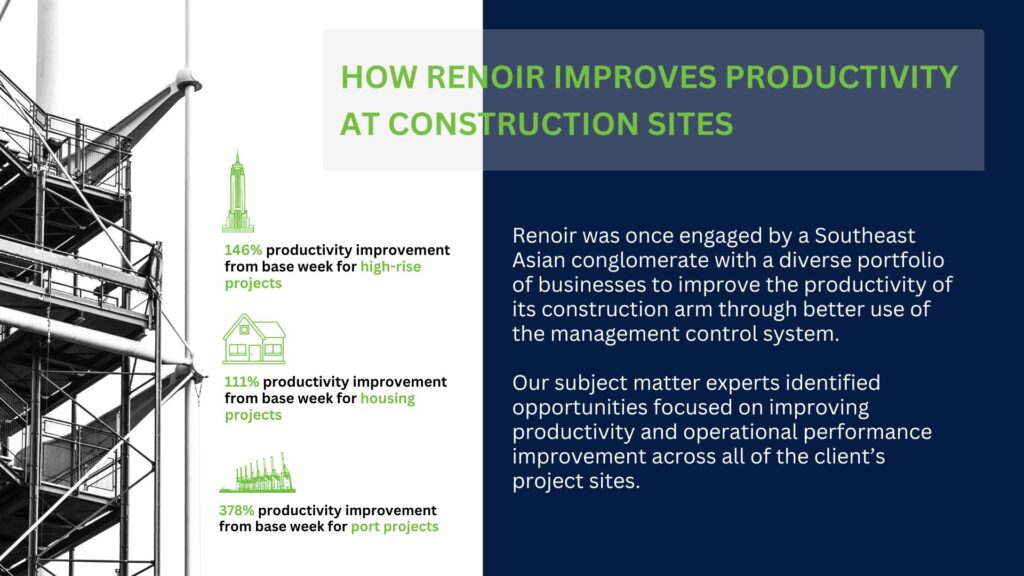At a Glance
- Lost productivity costs US businesses a staggering $1.8 trillion a year
- Tracking productivity is critical for various industries, especially manufacturing and construction, where employee output directly impacts business success
- Productivity can be optimised through meticulous planning, encompassing various strategies – tightening standards, debottlenecking, and speed optimisation
Low productivity. This is a serious problem that can have a significant impact on your organisation’s bottom line. In the long term, it leads to a host of unintended consequences, often damaging your operational excellence and organisational effectiveness.
How big of a problem is productivity? A study reveals that lost productivity costs US businesses a staggering $1.8 trillion a year.
Productivity is a versatile concept. While it can be interpreted in different ways, it is commonly referred to as the output produced by individuals, machines, or businesses, and the effort put into processes or systems. In business, there are two primary types of productivity:
- Production productivity. It measures the output of physical products, such as tonnes or parts. This measure applies to direct workers, including manufacturing and construction workers, as well as to production processes.
- Activity productivity. It measures work output as productivity, using metrics such as the number of shipping containers moved per hour. It applies to some direct functions, but primarily relates to indirect workers and staff, such as maintenance crews, warehouse staff, and clerical positions.
Productivity tracking
Tracking productivity is crucial for various industries, especially manufacturing and construction, where employee performance has a direct impact on business success.
For industries that are dependent on machineries and equipment for production, the impact of employees can be indirect since they rely on machinery maintenance. Therefore, productivity measures the process output.
A key metric in productivity measurement is Overall Equipment Effectiveness (OEE). This is a vital tool that assesses plant or factory performance against its limits and identifies sources of loss within the process.
Best practices for enhancing productivity
Optimising productivity is essential for businesses in all industries, but manufacturing businesses may not know where to begin. Here are some of the best practices for improving productivity in this industry:
Tighten standards
Adherence to time-oriented standards or guidelines for processes ensures consistent operations. The first step in elevating productivity often involves tightening these standards. Businesses can plan their standards around an 80% capacity target to accommodate potential delays, but the true measure of productivity should always be assessed against a 100% target.
Debottleneck processes
A bottleneck that occurs in any process will affect the efficiency of and impact overall productivity. It may begin as a physical constraint in a processing plant, the slowest stage on a production line, or an administrative backlog in clerical processes. These constraints need to be debottlenecked, or addressed, to unlock productivity improvements.
Improve speed
When pursuing productivity improvements, a primary objective is often to enhance speed or cycle time. Shortening the manufacturing cycle time for products or improving the turnaround time for aircraft maintenance are effective ways to achieve this goal. You can adopt process diagramming – where you outline each step of the process in a diagram.
Implement Short Interval Control
Short Interval Control (SIC) is a critical tool that every business should include in their productivity playbook. This is a structured process for identifying areas for improvement following observations and measurements of employees’ performance over a specific period of time. Implementing SIC appears to have positive impacts on productivity, as data-driven insights encourage and empower employees to strive for excellence and improvement.
Perform root cause analysis
Root cause analysis (RCA) is the process of identifying the underlying cause of a problem to facilitate effective solutions. This is an integral part of a Management Control System (MCS) that promotes continuous improvement.
In manufacturing, RCA is conducted when businesses intend to identify product defects, while in other industries, this analysis helps to diagnose productivity challenges.
It pays to plan
Efficiency can only be optimised through careful planning. A comprehensive plan should include various strategies discussed above, from tightening standards to debottlenecking, and speed optimisation.
Other specific planning methods such as pull-based planning, drum-buffer-rope planning, and just-in-time (JIT) planning should also be used. We have discussed these elements in a previous article.
Ready for a change in your organisation?
Peeling back the onion to better understand productivity issues
Productivity issues are like onions. They have layers.
Focusing on a single practice, or individual employee issues will not lead to profound change overnight. We need to see the forest for the trees to understand how all the different aspects of your organisation can work in harmony to improve productivity.
Sometimes on-the-job coaching or employees buy-in can be the most impactful method to improve productivity. Renoir has 28 years of experience providing practical and sustainable solutions, including redesigning or improving your business processes for efficiency and effectiveness, to deliver improved business outcomes.
Have you noticed productivity gaps in your business, but are not sure where to start or how to address them?













